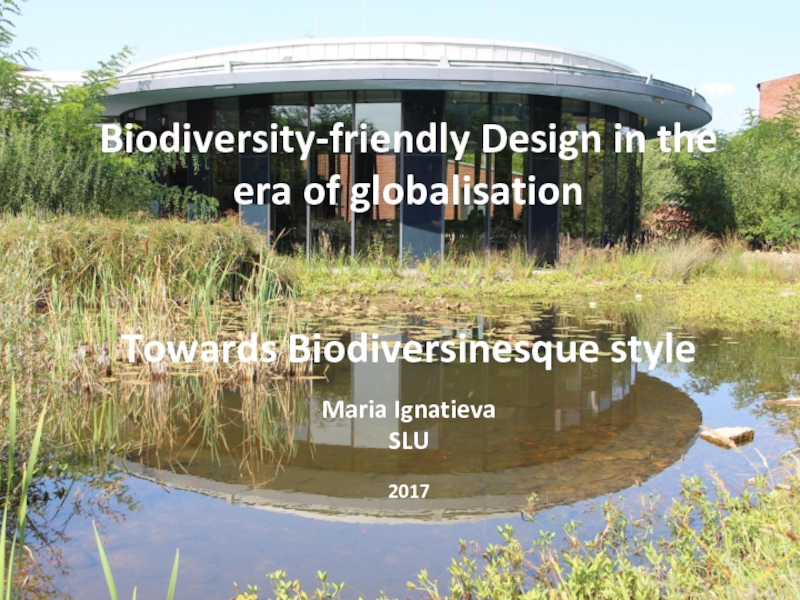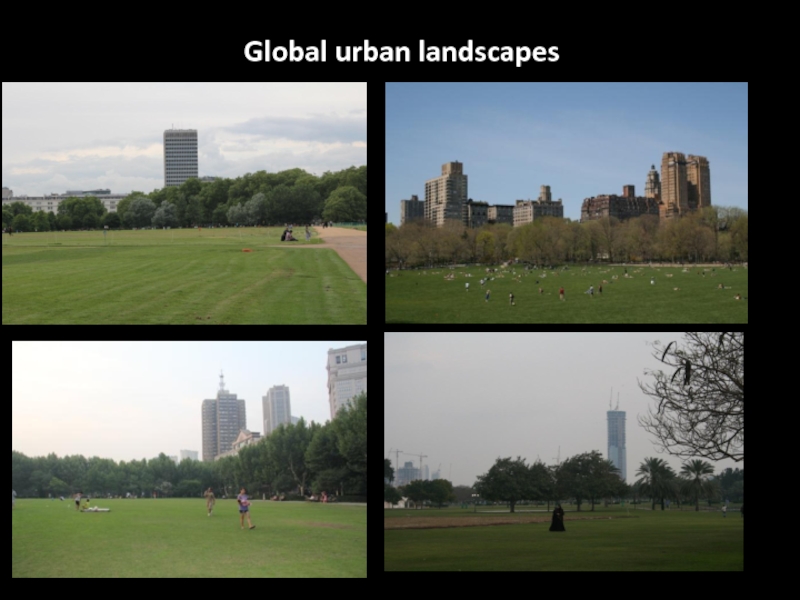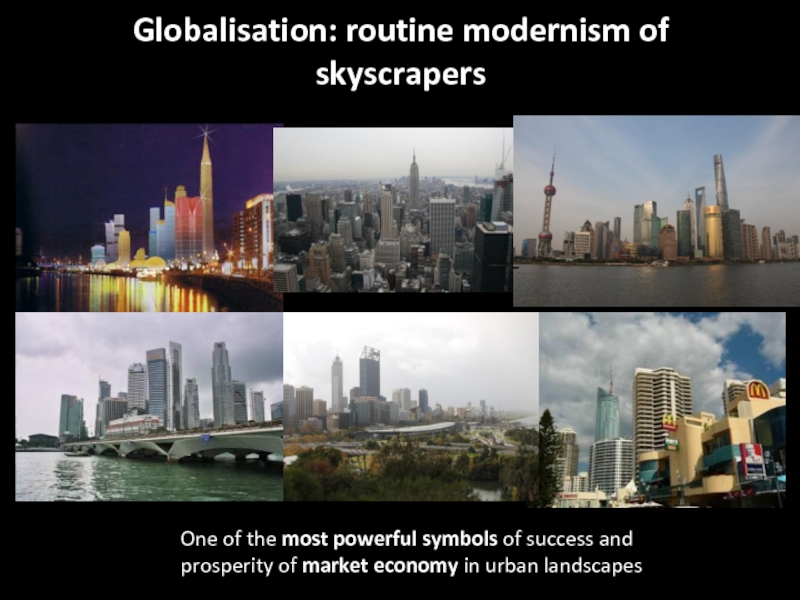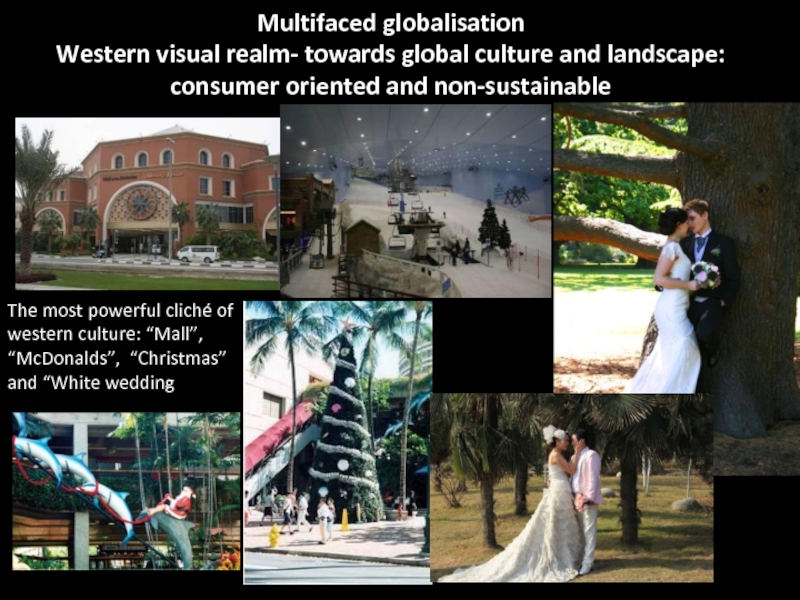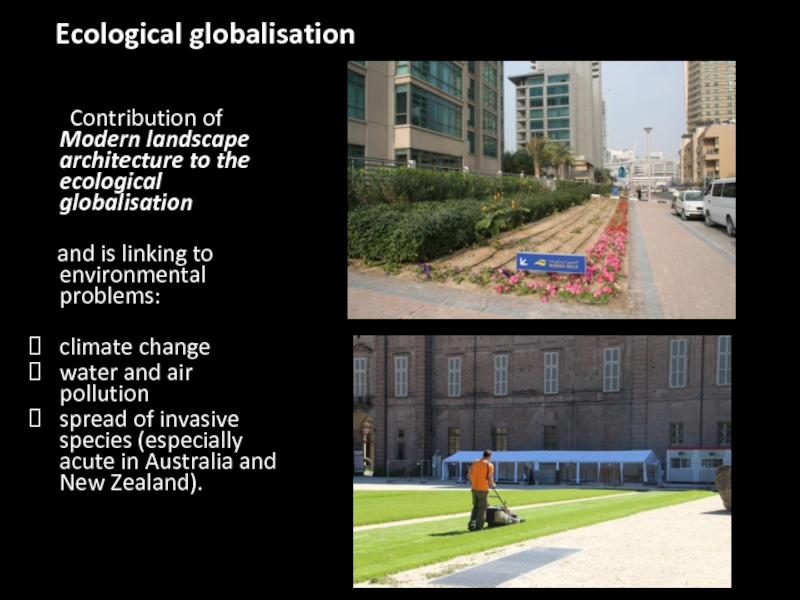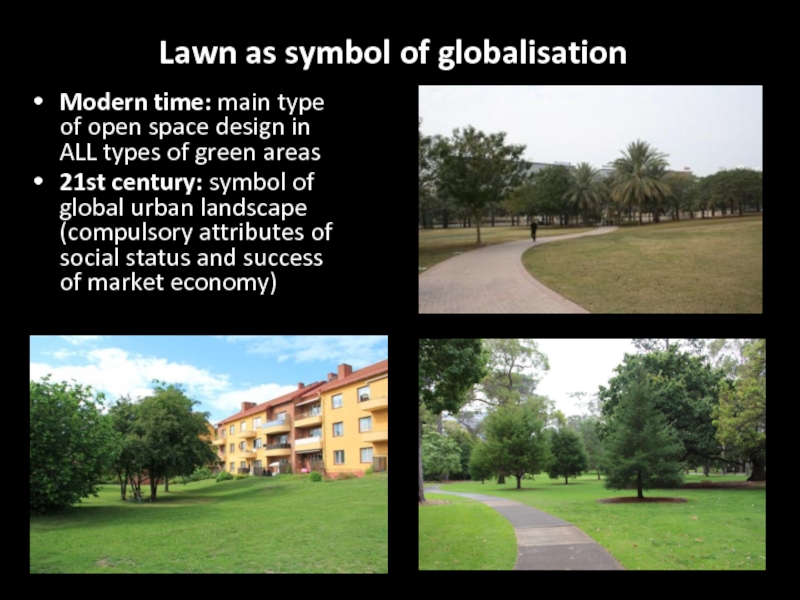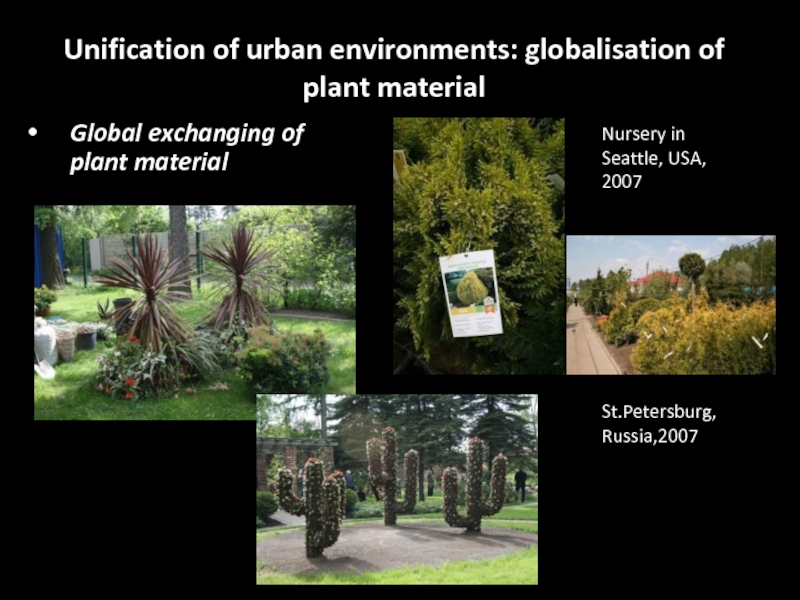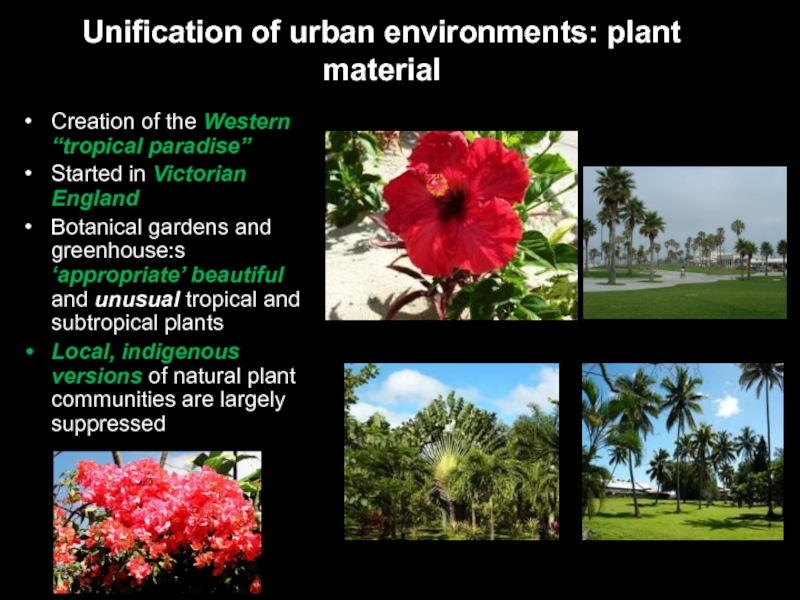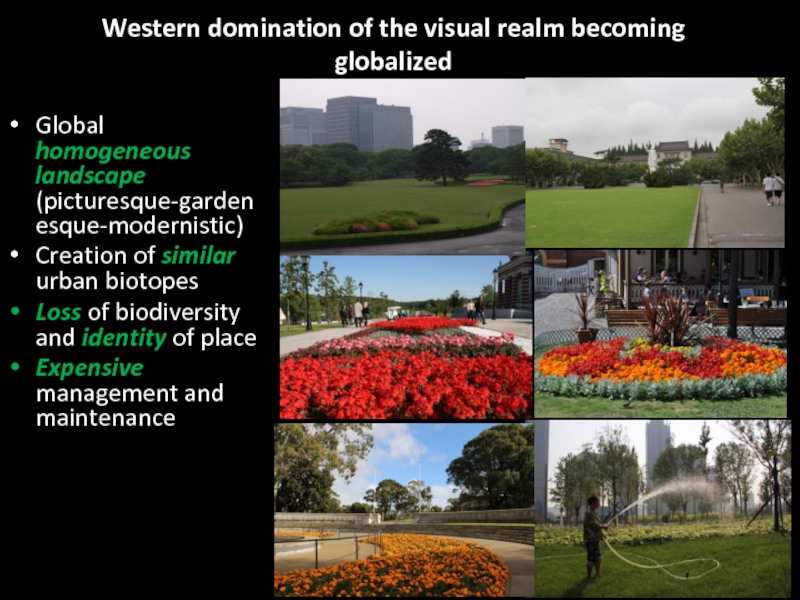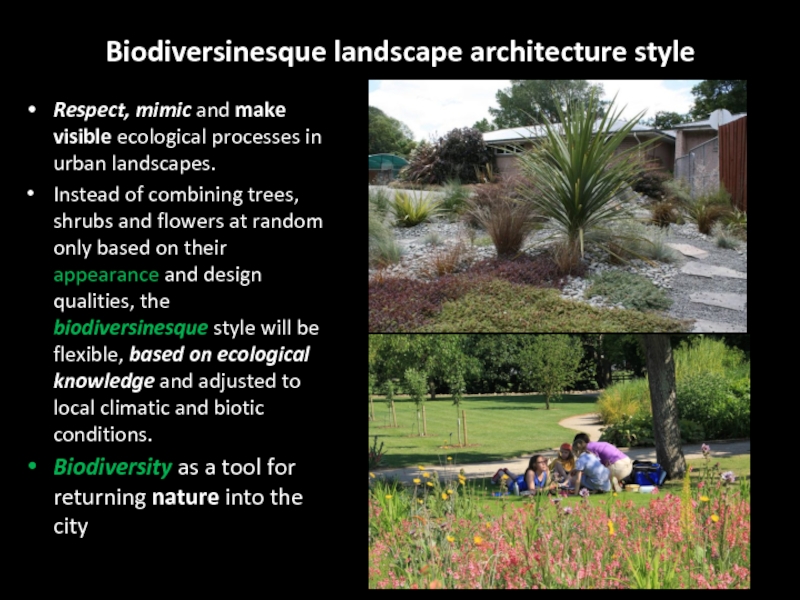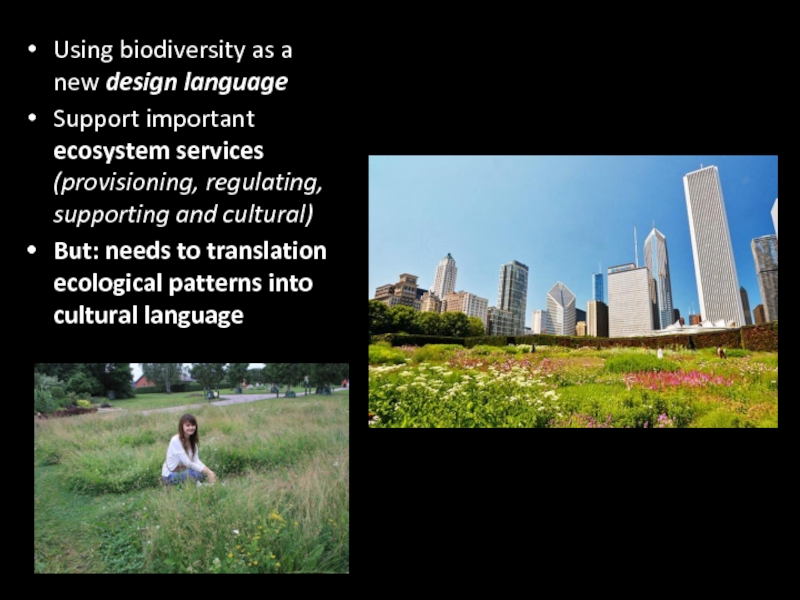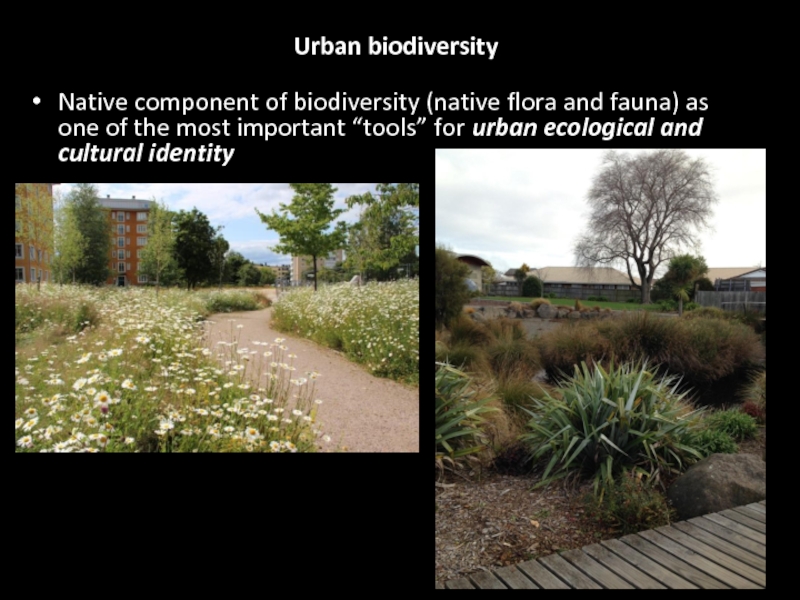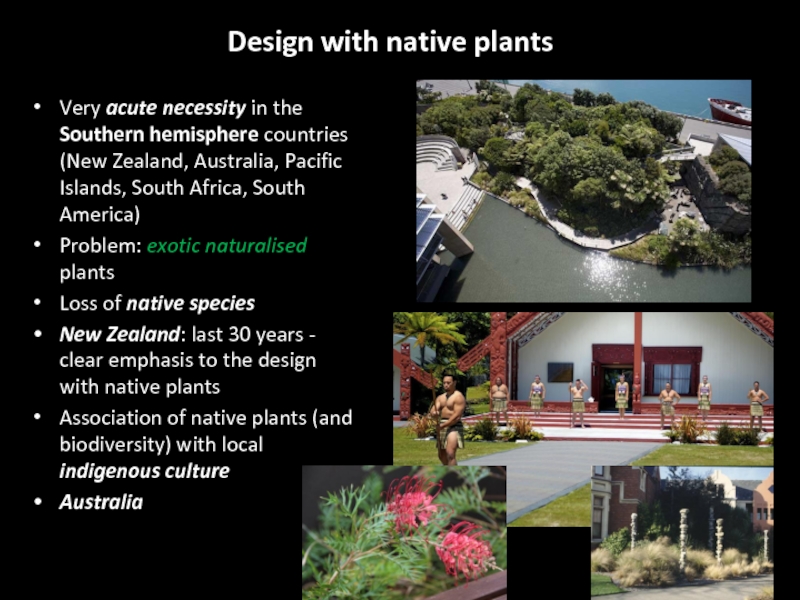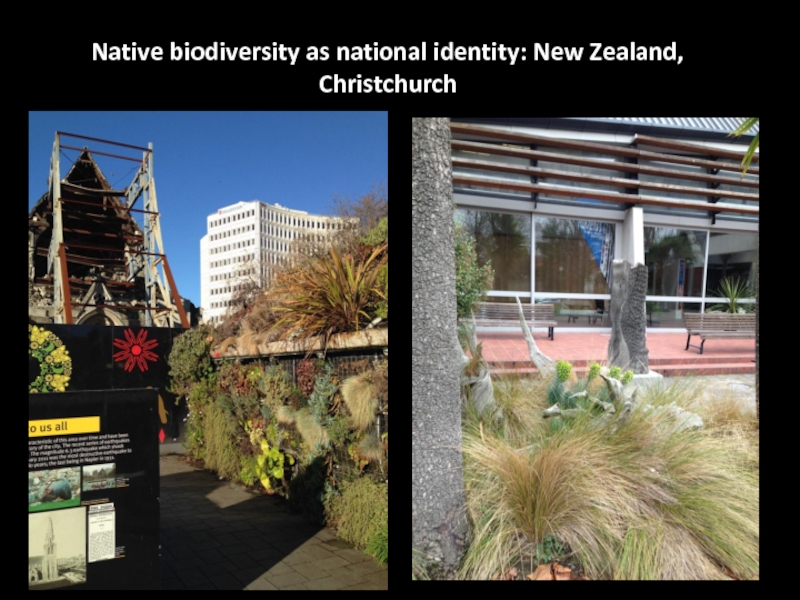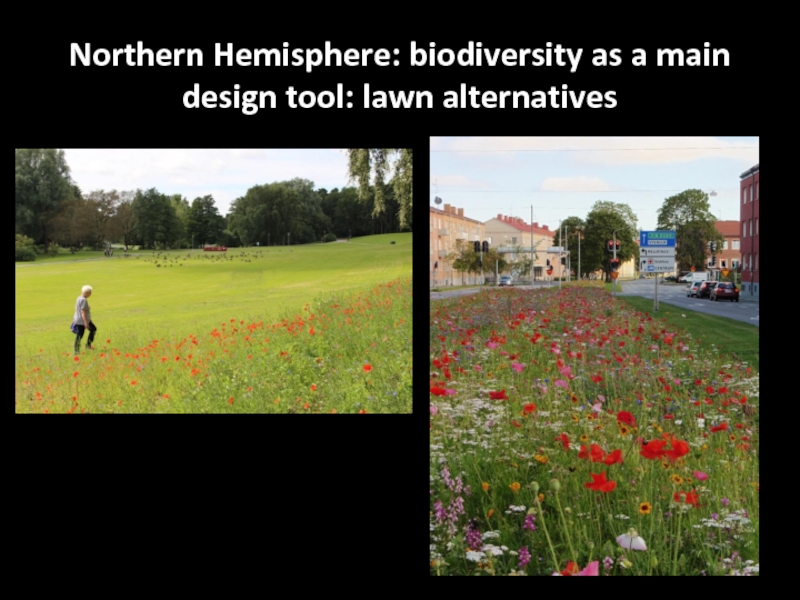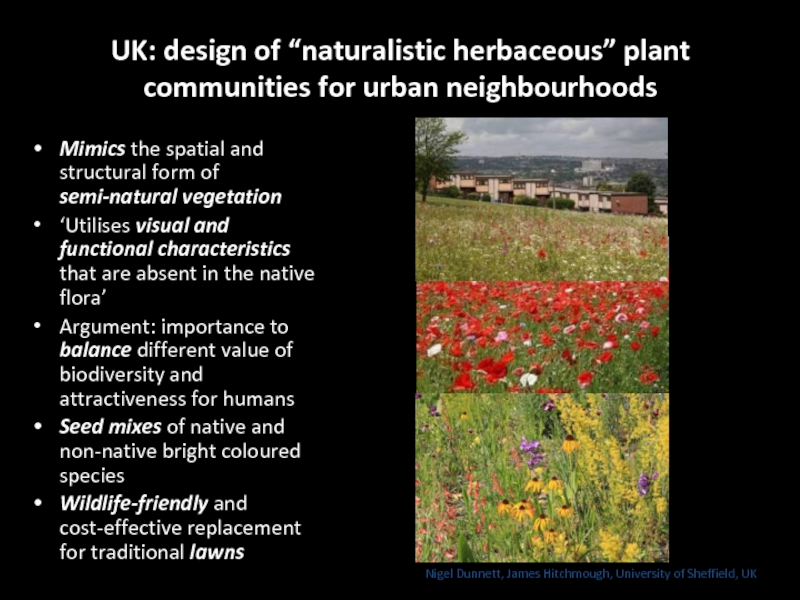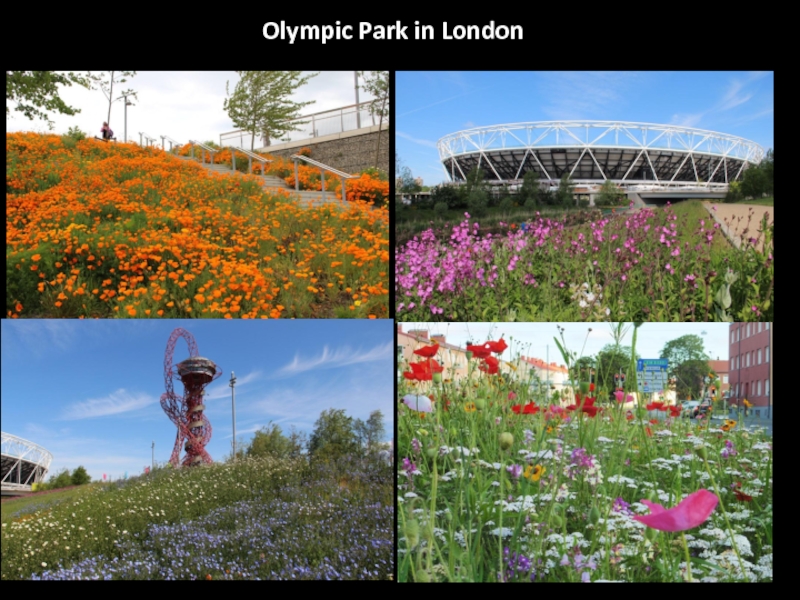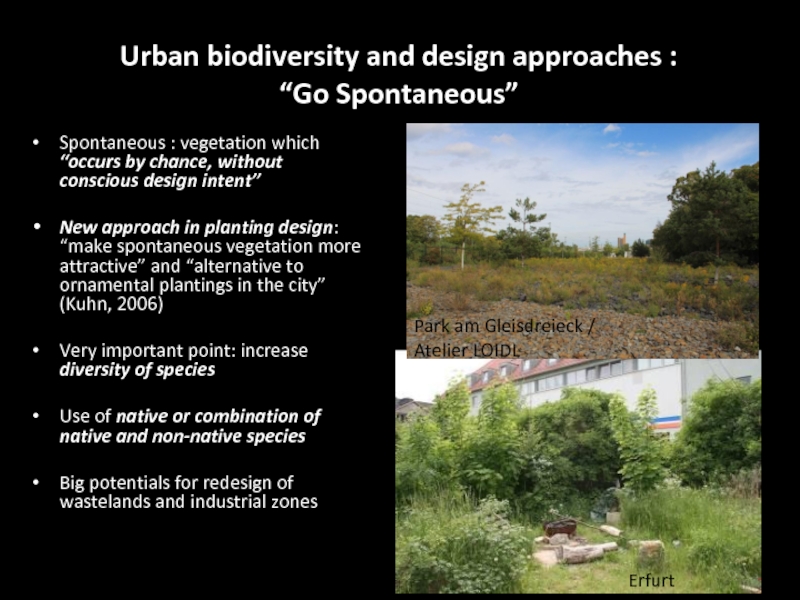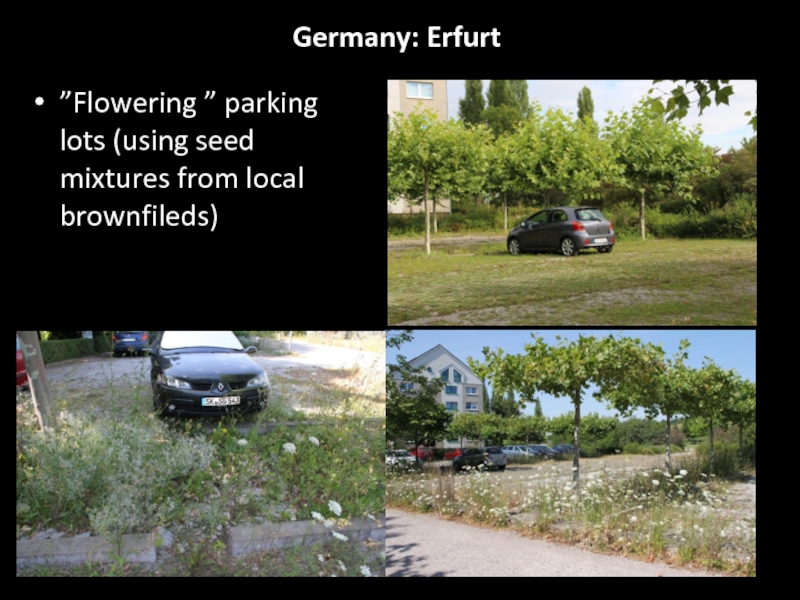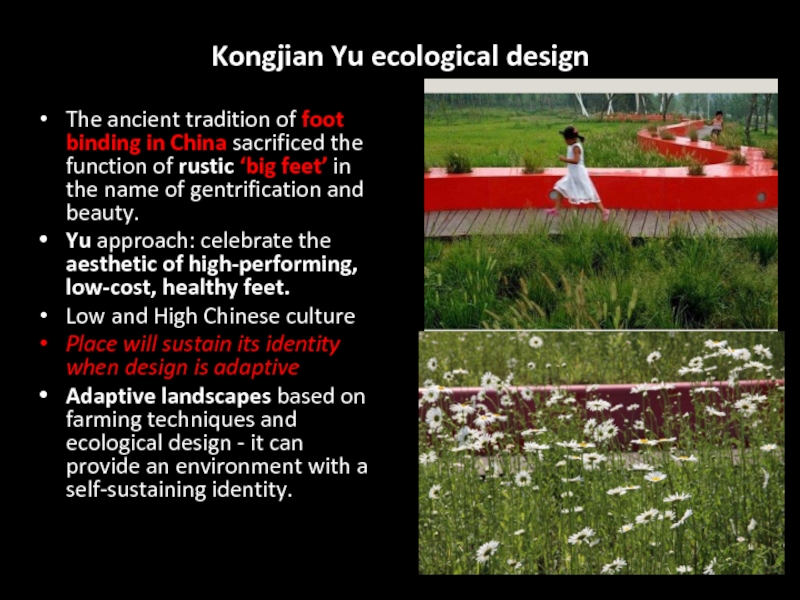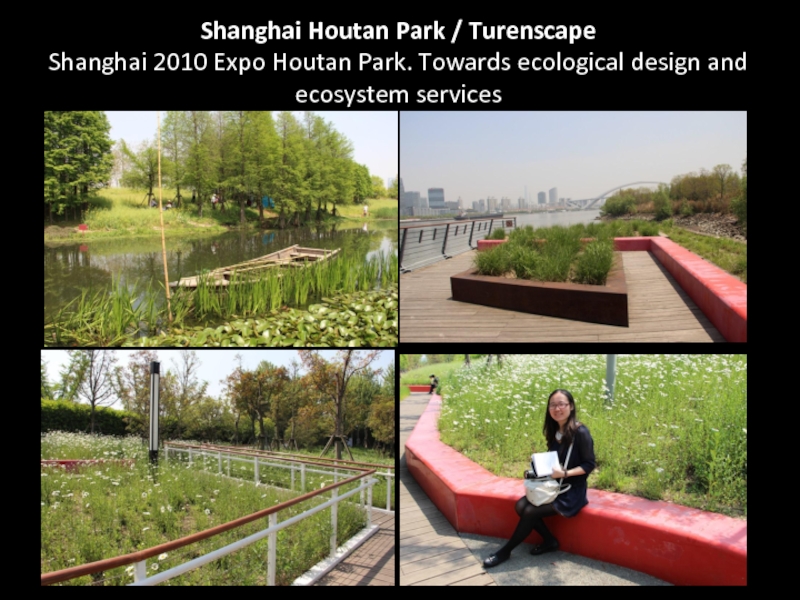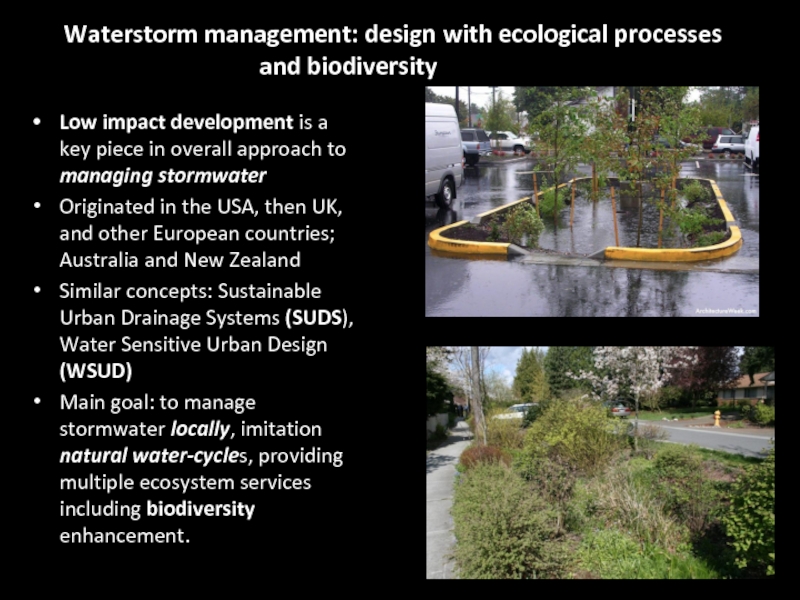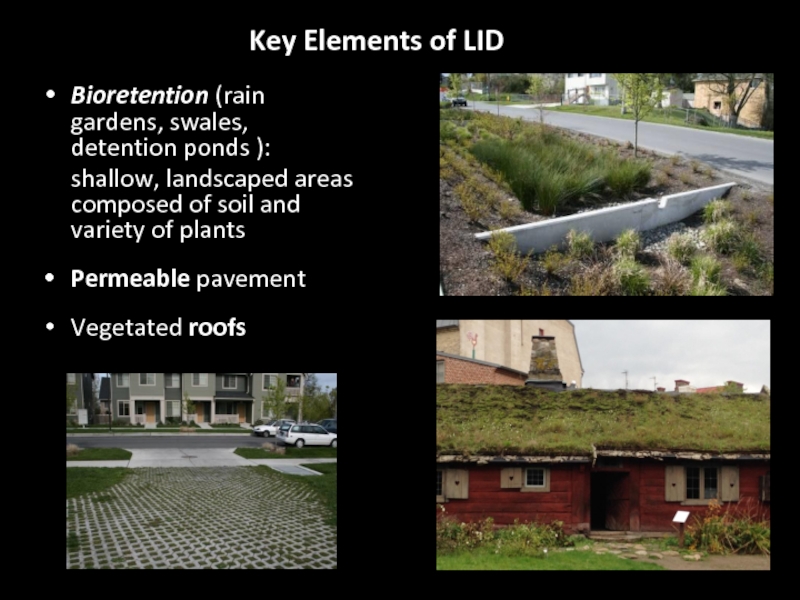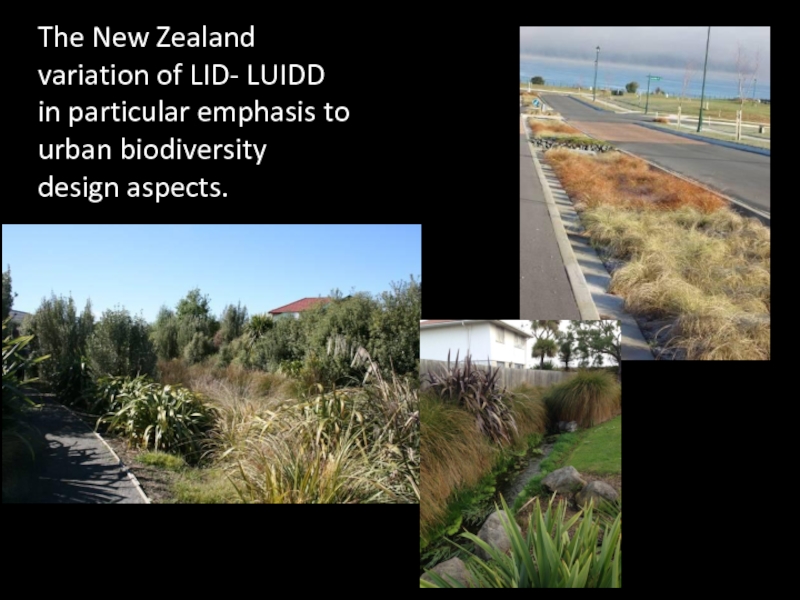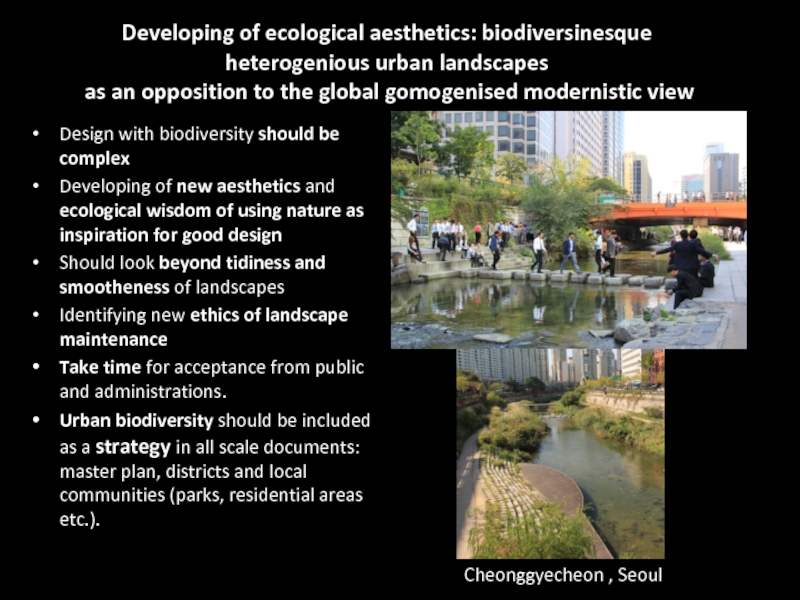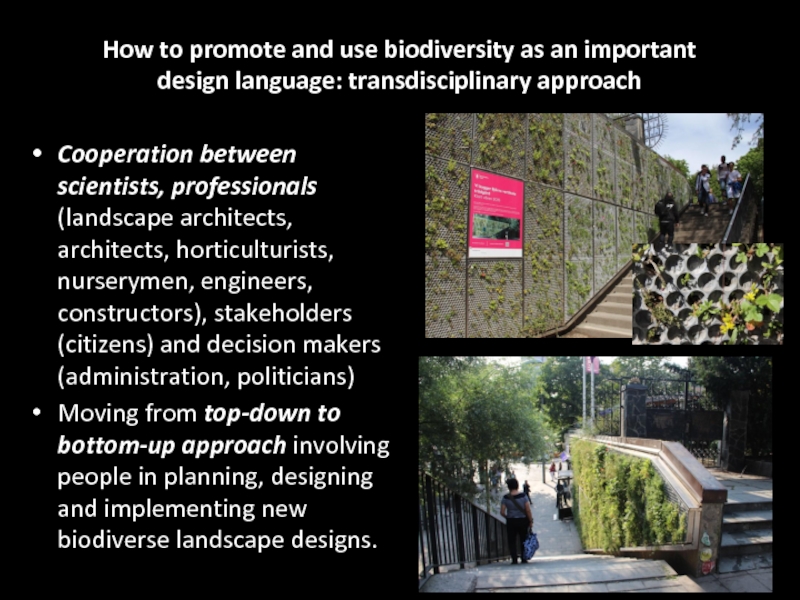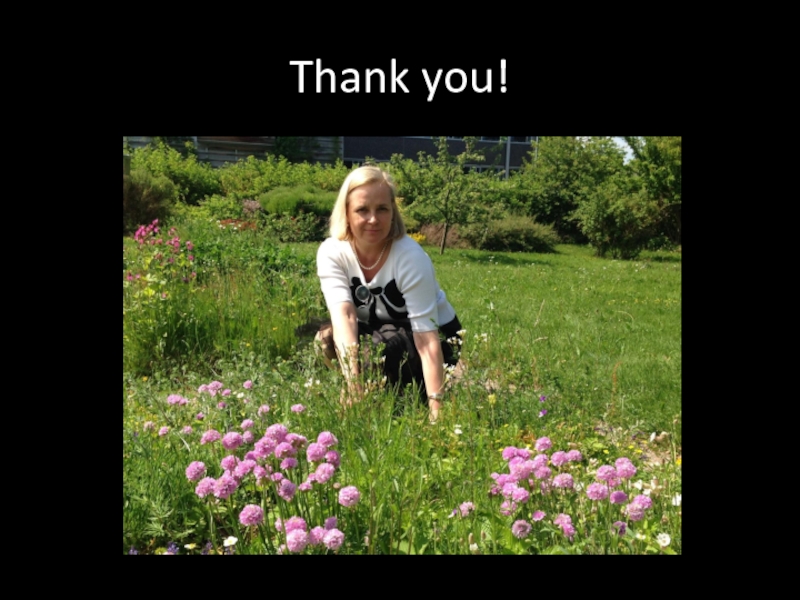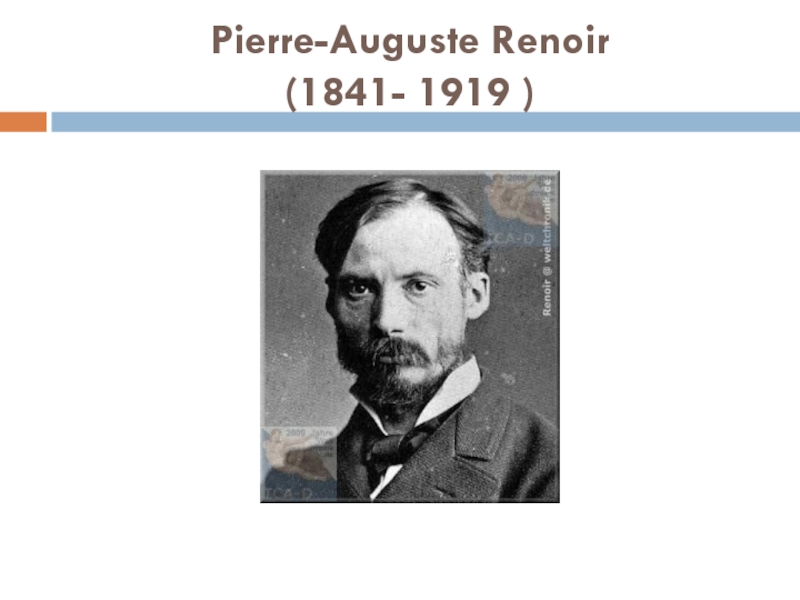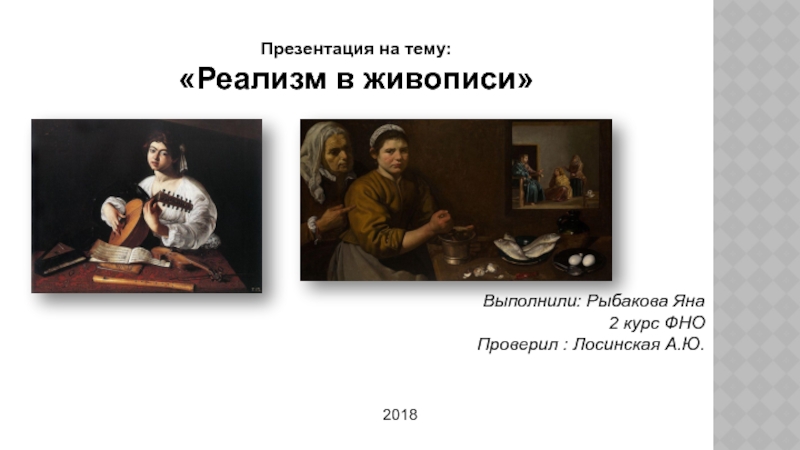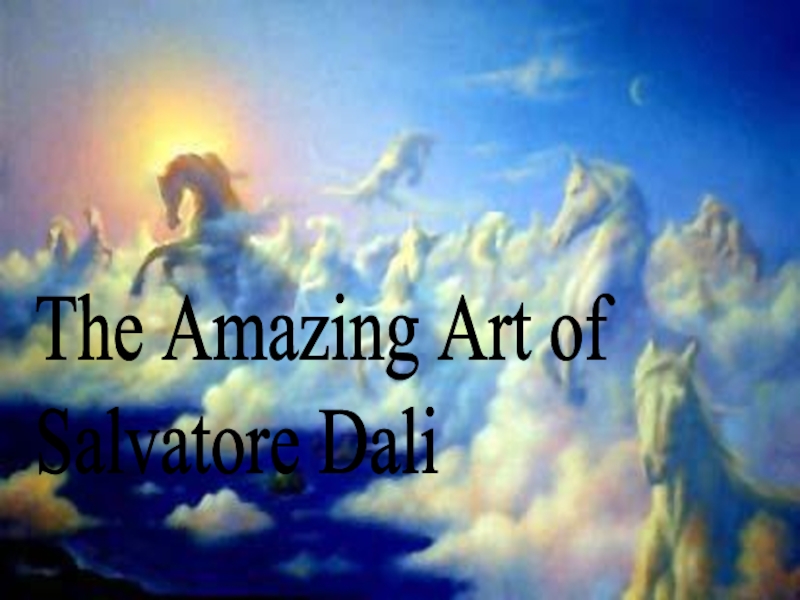- Главная
- Разное
- Дизайн
- Бизнес и предпринимательство
- Аналитика
- Образование
- Развлечения
- Красота и здоровье
- Финансы
- Государство
- Путешествия
- Спорт
- Недвижимость
- Армия
- Графика
- Культурология
- Еда и кулинария
- Лингвистика
- Английский язык
- Астрономия
- Алгебра
- Биология
- География
- Детские презентации
- Информатика
- История
- Литература
- Маркетинг
- Математика
- Медицина
- Менеджмент
- Музыка
- МХК
- Немецкий язык
- ОБЖ
- Обществознание
- Окружающий мир
- Педагогика
- Русский язык
- Технология
- Физика
- Философия
- Химия
- Шаблоны, картинки для презентаций
- Экология
- Экономика
- Юриспруденция
Biodiversity-friendly Design in the era of globalisation Towards Biodiversinesque style презентация
Содержание
- 1. Biodiversity-friendly Design in the era of globalisation Towards Biodiversinesque style
- 2. Global urban landscapes
- 3. Globalisation: routine modernism of skyscrapers One
- 4. Multifaced globalisation Western visual realm- towards
- 5. Ecological globalisation Contribution of Modern landscape
- 6. Lawn as symbol of globalisation Modern time:
- 7. Unification of urban environments: globalisation of plant
- 8. Unification of urban environments: plant material
- 9. Western domination of the visual realm becoming
- 10. Biodiversinesque landscape architecture style Respect, mimic and
- 11. Using biodiversity as a new design language
- 12. Urban biodiversity Native component of biodiversity (native
- 13. Design with native plants Very acute necessity
- 14. Native biodiversity as national identity: New Zealand, Christchurch
- 15. Northern Hemisphere: biodiversity as a main design tool: lawn alternatives
- 16. UK: design of “naturalistic herbaceous” plant communities
- 17. Olympic Park in London
- 18. Urban biodiversity and design approaches :
- 19. Germany: Erfurt ”Flowering ” parking lots (using seed mixtures from local brownfileds)
- 20. Kongjian Yu ecological design The ancient tradition
- 21. Shanghai Houtan Park / Turenscape Shanghai 2010
- 22. Waterstorm management: design with ecological processes and
- 23. Key Elements of LID Bioretention (rain gardens,
- 24. The New Zealand variation of LID- LUIDD in particular emphasis to urban biodiversity design aspects.
- 25. Developing of ecological aesthetics: biodiversinesque heterogenious urban
- 26. How to promote and use biodiversity as
- 27. Thank you!
Слайд 1Biodiversity-friendly Design in the era of globalisation
Towards Biodiversinesque style
Maria Ignatieva
SLU
2017
Слайд 3Globalisation: routine modernism of skyscrapers
One of the most powerful symbols
Слайд 4Multifaced globalisation Western visual realm- towards global culture and landscape: consumer
The most powerful cliché of western culture: “Mall”, “McDonalds”, “Christmas” and “White wedding”
Слайд 5Ecological globalisation
Contribution of Modern landscape architecture to the ecological globalisation
climate change
water and air pollution
spread of invasive species (especially acute in Australia and New Zealand).
Слайд 6Lawn as symbol of globalisation
Modern time: main type of open space
21st century: symbol of global urban landscape (compulsory attributes of social status and success of market economy)
Слайд 7Unification of urban environments: globalisation of plant material
Global exchanging of plant
Nursery in Seattle, USA, 2007
Nursery in St.Petersburg, Russia,2007
Слайд 8Unification of urban environments: plant material
Creation of the Western “tropical paradise”
Started
Botanical gardens and greenhouse:s ‘appropriate’ beautiful and unusual tropical and subtropical plants
Local, indigenous versions of natural plant communities are largely suppressed
Слайд 9Western domination of the visual realm becoming globalized
Global homogeneous landscape (picturesque-gardenesque-modernistic)
Creation
Loss of biodiversity and identity of place
Expensive management and maintenance
Слайд 10Biodiversinesque landscape architecture style
Respect, mimic and make visible ecological processes in
Instead of combining trees, shrubs and flowers at random only based on their appearance and design qualities, the biodiversinesque style will be flexible, based on ecological knowledge and adjusted to local climatic and biotic conditions.
Biodiversity as a tool for returning nature into the city
Слайд 11Using biodiversity as a new design language
Support important ecosystem services (provisioning,
But: needs to translation ecological patterns into cultural language
Слайд 12Urban biodiversity
Native component of biodiversity (native flora and fauna) as one
Слайд 13Design with native plants
Very acute necessity in the Southern hemisphere countries
Problem: exotic naturalised plants
Loss of native species
New Zealand: last 30 years - clear emphasis to the design with native plants
Association of native plants (and biodiversity) with local indigenous culture
Australia
Слайд 16UK: design of “naturalistic herbaceous” plant communities for urban neighbourhoods
Mimics the
‘Utilises visual and functional characteristics that are absent in the native flora’
Argument: importance to balance different value of biodiversity and attractiveness for humans
Seed mixes of native and non-native bright coloured species
Wildlife-friendly and cost-effective replacement for traditional lawns
Nigel Dunnett, James Hitchmough, University of Sheffield, UK
Слайд 18Urban biodiversity and design approaches :
“Go Spontaneous”
Spontaneous : vegetation which
New approach in planting design: “make spontaneous vegetation more attractive” and “alternative to ornamental plantings in the city” (Kuhn, 2006)
Very important point: increase diversity of species
Use of native or combination of native and non-native species
Big potentials for redesign of wastelands and industrial zones
Park am Gleisdreieck / Atelier LOIDL
Erfurt
Слайд 20Kongjian Yu ecological design
The ancient tradition of foot binding in China
Yu approach: celebrate the aesthetic of high-performing, low-cost, healthy feet.
Low and High Chinese culture
Place will sustain its identity when design is adaptive
Adaptive landscapes based on farming techniques and ecological design - it can provide an environment with a self-sustaining identity.
Слайд 21Shanghai Houtan Park / Turenscape Shanghai 2010 Expo Houtan Park. Towards ecological
Слайд 22Waterstorm management: design with ecological processes and biodiversity in mind
Low impact
Originated in the USA, then UK, and other European countries; Australia and New Zealand
Similar concepts: Sustainable Urban Drainage Systems (SUDS), Water Sensitive Urban Design (WSUD)
Main goal: to manage stormwater locally, imitation natural water-cycles, providing multiple ecosystem services including biodiversity enhancement.
Слайд 23Key Elements of LID
Bioretention (rain gardens, swales, detention ponds ):
Permeable pavement
Vegetated roofs
Слайд 24The New Zealand variation of LID- LUIDD in particular emphasis to
Слайд 25Developing of ecological aesthetics: biodiversinesque heterogenious urban landscapes as an opposition
Design with biodiversity should be complex
Developing of new aesthetics and ecological wisdom of using nature as inspiration for good design
Should look beyond tidiness and smootheness of landscapes
Identifying new ethics of landscape maintenance
Take time for acceptance from public and administrations.
Urban biodiversity should be included as a strategy in all scale documents: master plan, districts and local communities (parks, residential areas etc.).
Cheonggyecheon , Seoul
Слайд 26How to promote and use biodiversity as an important design language:
Cooperation between scientists, professionals (landscape architects, architects, horticulturists, nurserymen, engineers, constructors), stakeholders (citizens) and decision makers (administration, politicians)
Moving from top-down to bottom-up approach involving people in planning, designing and implementing new biodiverse landscape designs.
